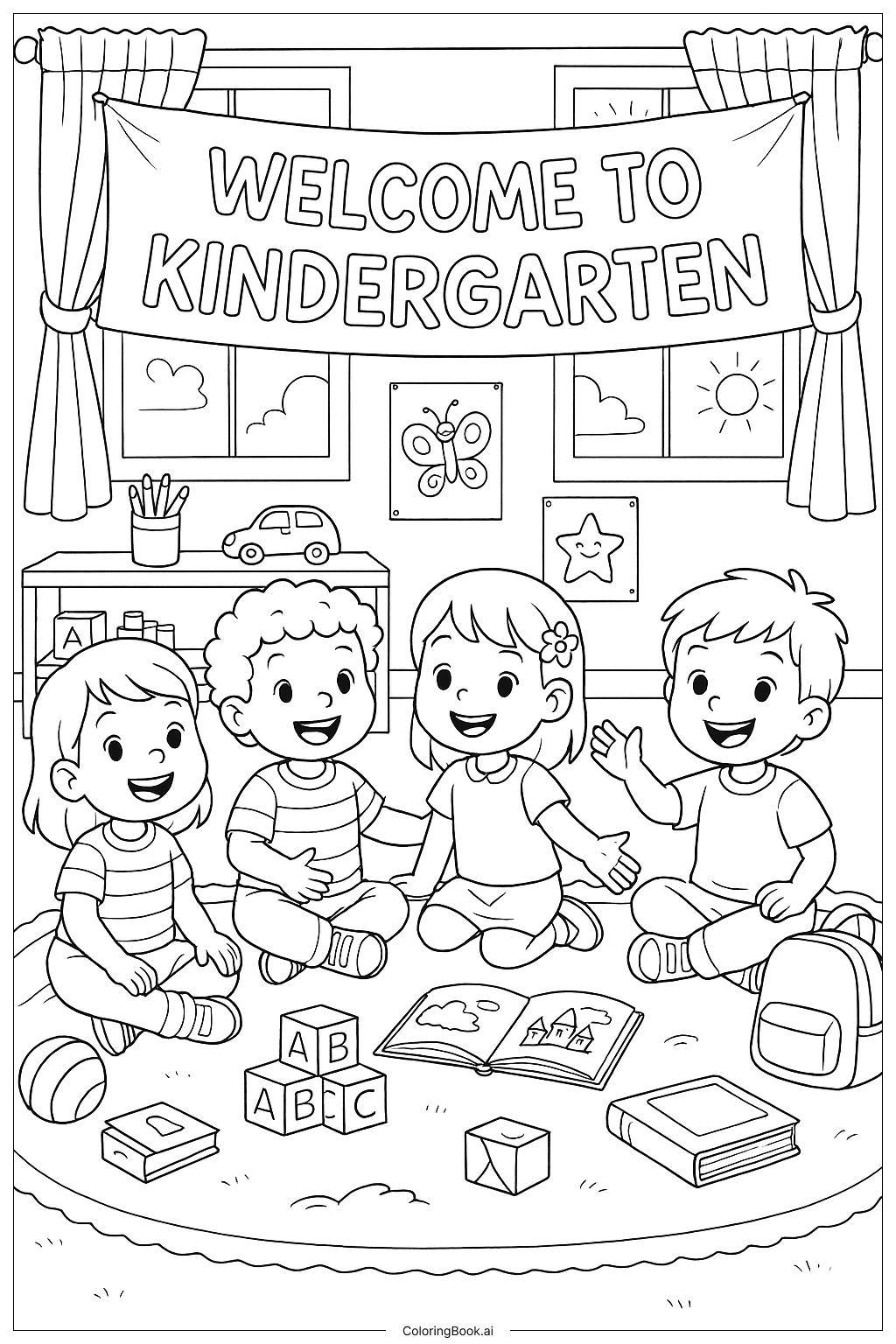Coloring tips: How to color Happy Kids On Rug Welcome To Kindergarten coloring page well?
Try using bright and cheerful colors like yellow, red, and blue for the children's clothes to show their happiness. Use different colors for each child's hair to make them unique. Color the rug in a lively shade, maybe with patterns or stripes. The banner should stand out with bold colors such as red or orange. For the background, use light blue for the sky through the windows and yellows or light orange for the sunlight. The drawings on the wall can be in simple, vibrant colors like purple for the butterfly and yellow for the star. Don't forget the toys—color the blocks with ABC in different shades to make them eye-catching. Use green or brown for the floor to give a warm classroom feel.
Coloring challenges: Which parts are difficult to color and need attention for Happy Kids On Rug Welcome To Kindergarten coloring page?
1. The many small objects like blocks, pencils, and the ball require careful attention and delicate coloring to stay inside the lines.
2. The facial features of the children are small and detailed, so precise coloring is needed to keep their expressions clear and friendly.
3. The banner has many letters that should be colored evenly to keep the message visible and neat.
4. The background elements such as curtains, windows, and drawings may blend together if colors are too similar, requiring thoughtful color selection for contrast.
5. Coloring the round rug evenly while adding some texture or patterns might be challenging for beginners but adds depth to the picture.
Benefits of coloring books: Advantages of drawing Happy Kids On Rug Welcome To Kindergarten coloring page
Coloring this picture helps children improve their fine motor skills by practicing careful and detailed coloring. It encourages creativity through choosing different colors for the children, toys, and background. This activity also promotes focus and patience as kids work on smaller parts like the blocks and facial details. Coloring a welcoming classroom scene can create positive feelings about school and learning. Overall, it’s a fun way to develop both artistic and emotional skills in young learners.
